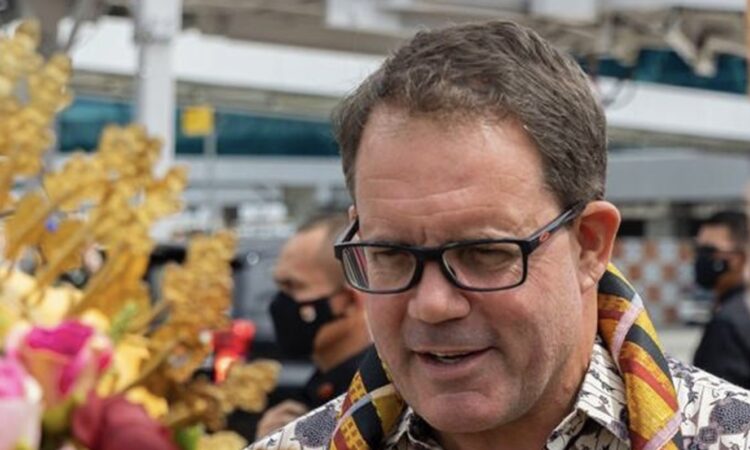

Prime Minister Anthony Albanese has made unprecedented financial and representative commitments to the Northern Territory, including the recent appointment of member of federal parliament Luke Gosling as special envoy for Northern Australia. This signals a strong intention to address the region’s unique challenges and opportunities.
Financial investment is not a panacea for the north: government funding must be strategically geared towards areas of genuine need. It is therefore crucial to establish sustained political commitment to the region, with shared priorities at the state, territory and federal government levels. This may be a formidable challenge, especially if the three elections due to be held over the coming months bring changes in government.
The Albanese government’s commitment to the Northern Territory is exemplified in housing policy—a critical enabler for workforce expansion, skilled immigration and economic growth. In March, during his ninth visit to the Northern Territory as prime minister, Albanese committed $4 billion in joint territory and federal government funding to build 2700 homes in remote communities over 10 years.
The federal government also pledged a further $737 million for the Northern Territory’s public school system, with the aim of reaching 100 percent of the Schooling Resource Standard by 2029.
Successfully negotiating these funding packages is a significant achievement for Chief Minister Eva Lawler and her government, regardless of the outcome of the Northern Territory election on 24 August. Such strategic investments lay strong foundations for the territory’s future, addressing critical needs and promoting long-term growth. Irrespective of political alignment, the incoming government must build on Lawler’s successful negotiations and execute policies that will leverage these new investments.
However, funding alone is not enough. Investments in housing projects must be combined with a skilled workforce and a strong construction sector. Since Covid, Australia’s construction industry has experienced significant disruptions and surging business failures. More than 2000 construction companies have gone into liquidation since mid-2021, according to ASIC data. Rising material costs, supply chain issues and labour shortages have been the main reasons. The effect is compounded in regional areas with smaller workforces, as shortages pose a direct threat to the delivery of critical infrastructure, including housing. The next Northern Territory government will need bold new policies to complement funding and achieve tangible outcomes.
As Australia heads toward a federal election by May 2025, it is imperative that the government remains committed to current strategic investments and policies. Achieving tangible outcomes in the Northern Territory, and more broadly across northern Australia, demands bold new policies supported by strong federal government action and aligned investment. Whether these will be delivered in the upcoming Northern Australia White Paper Refresh is yet to be seen. This refresh will be a critical test of the government’s commitment to addressing the unique challenges and opportunities of the north, and it is vital for the sustained development of northern Australia, which is in the broader national interest.
As explored in my previous article, we are still far from reaching true representation for the region. Bipartisan support is needed for nuanced, tailored policies with a stronger emphasis on advocacy and representation for northern Australia. Representation must shift from an ad-hoc model to a permanent one, to ensure the north’s relevance is reflected in the federal agenda.
The recent appointment of Gosling as the Special Envoy for Defence, Veterans’ Affairs and Northern Australia signals the government’s recognition of the region’s importance. The role will help drive meaningful progress, but it also comes with substantial challenges. Gosling must balance the needs of northern Australia with those of defence and veterans’ affairs, which requires careful prioritisation and strategic thinking.
Nevertheless, Gosling is a well-considered choice, given his extensive background in, and deep connections to, northern Australia. He lives there, so he has first-hand knowledge of the region’s challenges and opportunities. His Bahasa Indonesian language skills and professional experience in Southeast Asia also mean he is well placed to represent the north in discussions with our closest international neighbours.
One of the most pressing challenges that Gosling faces is securing bipartisan support for the region’s initiatives. Federally, the Joint Select Committee on Northern Australia is an ideal mechanism for this. Gosling should advocate for the establishment of a standing committee to ensure sustained focus and accountability.
Collaboration with the first ministers of northern jurisdictions will also be essential in aligning state and federal efforts. The upcoming elections for the Northern Territory, Queensland and federal governments provide an opportunity for establishing meaningful collaboration. Incoming governments at each level must set new policy agendas for the north that can be shaped under Gosling’s leadership.
Working directly with Albanese and Minister for Northern Australia Madeleine King, Gosling is uniquely positioned to drive substantial impact. But his leadership will depend on his ability to navigate the complexities of both federal and regional politics, and to push for meaningful governance reforms that are long overdue.
All eyes will be on how Gosling steers his vital role. By leveraging his diplomatic skills, he could bridge political divides and enact real change in how northern Australia is governed. Bold and visionary leadership could transform long-standing aspirations into tangible outcomes. Peter Dutton and the Liberal National Party will also be closely watched, as their views and actions will be instrumental in shaping the bipartisan support necessary to build a bright future for northern Australia.
